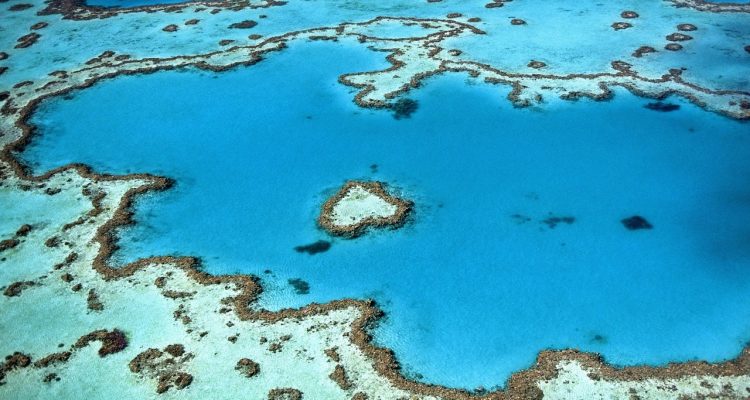Thanks to global warming and El Niño phenomenon, this season, Australian reef suffered the worst coral bleaching in history.
Beyond all the apocalyptic climate change predictions, the death of only areas of the Great Barrier carries a lot more harm to nature and economy that you might think.
Hard facts about the coral reef biodiversity
Besides its beauty and touristic interest, the coral reefs represents a huge receptacle of biodiversity.
Usually compared to rainforests, they cover just 0.1% of the planet’s seafloor, but they host 25% of marine fish species. This abundance of wildlife, sustain food for half a billion people -remember their proximity to highly dense countries-.
The biggest mass is the Great Barrier Reef, which consists of about 3,000 individual coral reefs, 750 islands and 300 coral cays that together cover about 134,000 square miles along the coast of the province of Queensland. 30 species of whales, dolphins, and porpoises depend on the Great Barrier; 17 species of sea snake, 6 species of sea turtle, around 125 species of sharks, 5000 species of molluscs, 49 species of pipefish and 9 species of seahorses, to number a few notorious inhabitants. About the corals themselves, 400 species inhabit the reef. These corals mass spawn by the rising sea temperatures of spring and summer, the lunar cycle, and the diurnal cycle; so a shift in climate alters their natural life cycle.
How does the coral bleach? What does it mean?
The coloring of the corals shows their health. To thrive, corals need a symbiotic coexistence with an algae-like unicellular organism called Zooxanthellae.
The coral protects the algae from the surrounding environment, in return the algae provides the coral with oxygen and gets rid of waste. Although the corals feed on zooplankton, they rely largely on their zooxanthellae for nutrition, and without them could starve to death.
When corals get stressed, the expel their symbiotic associates, leaving them bone white or “bleached”.
But bleaching is the first step. If the loss of zooxanthellae persist, the weak coral polyps got covered with big algae that fishes cannot get rid of, and die.
Major coral bleaching events
In 1998 a big bleaching occurred, also thanks to El Niño, that wiped out 16% of the world’s reefs in a single year. But, in a smaller scale, the reef was degraded from what it was like 40 years ago. According to a report from the Australian Institute of Marine Science, 50% reef’s coral died between 1985 and 2012.
To evaluate the damage that heat waves, El Niño and unusual cyclones that hit the area since December 2015, a group of Australian scientists surveyed reefs from Cairns to Papua New Guinea.
“This has been the saddest research trip of my life,” says Prof. Terry Hughes, convenor of the National Coral Bleaching Taskforce. “Almost without exception, every reef we flew across showed consistently high levels of bleaching, from the reef slope right up onto the top of the reef. We flew for 4000km in the most pristine parts of the Great Barrier Reef and saw only four reefs that had no bleaching. The severity is much greater than in earlier bleaching events in 2002 or 1998.”
Coral reef recovering
Even when a big part of the bleached corals can die, some may recover and regrow if conditions change. The more acidic water and the pollution generated for ports and tourism should decrease, to recover the natural balance of the area.
But, what most scientifics agree on is reducing the CO2 emissions to reduce the greenhouse effect and lower the temperature on the surface of the Earth and the seas. With a sustained raise of just 2º, consequences can be devastating -and not only to coral reefs-.
Hugh Sweatman, one of the scientific from Australian Institute of Marine Science, said: “Our data show that the reefs can regain their coral cover after such disturbances, but recovery takes 10-20 years”.

